Hi Grade |
Hi-Grade Wireless Instrument Company
|
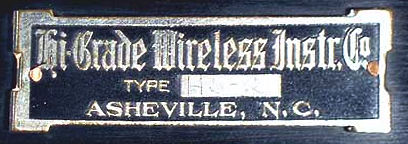 |
| In the 1920's & 30's there were very few factories in North Carolina producing any kind of electrical components. To the best of my knowledge only one small company in the city of Asheville, North Carolina ever attempted to manufacture a broadcast receiver during the 1920's.
In 1923 a Mr. John Rombau founded radio station WFAJ in Asheville. By 1924 he was operating a small company to build this three tube receiver and possibly a crystal set. Only two examples of this vacuum tube receiver are known to survive. No examples of the crystal set have been located. There were many small and a few relatively large businesses in the US that were building broadcast receivers without obtaining a license to use the Armstrong regenerative circuit controlled by the Radio Corporation of America (RCA). Some of these small operations thought they could escape being in technical violation of the patents if the radios were built with all the components installed but without the wiring required to make the radio a regenerative detector. All the owner of the radio had to do is make these last few connections and the radio would work like most other Armstrong regenerative sets. To make that circuit change as easy as possible, this Hi-Grade radio has a black Bakelite panel on the back of the chassis with eight - black binding posts. Only four wires needed to be connected across the binding posts to make it regenerate. The top row of binding posts were for antenna, ground and the battery connections. The simple solid walnut cabinets were made at a woodworking shop owned by Dolph Blankenship in the western part of the city. The company probably sold only a few hundred radios. In 1924 the company was listed in the RADIO TRADE DIRECTORY published by McGraw-Hill Company, Inc. Such a listing was likely to have come to the attention of the RCA legal department and probably resulted in a letter to Mr. Rombau expressing their opinion that his radio was infringing on patents of the RCA and of their willingness to seek damages if the product remained on the market. Such letters were usually all that was necessary to quickly put these small businesses out of operation. I have not had the opportunity to spend time in Asheville for research into this manufacturer. I would welcome any additional information you might have. Robert Lozier - KD4HSH |
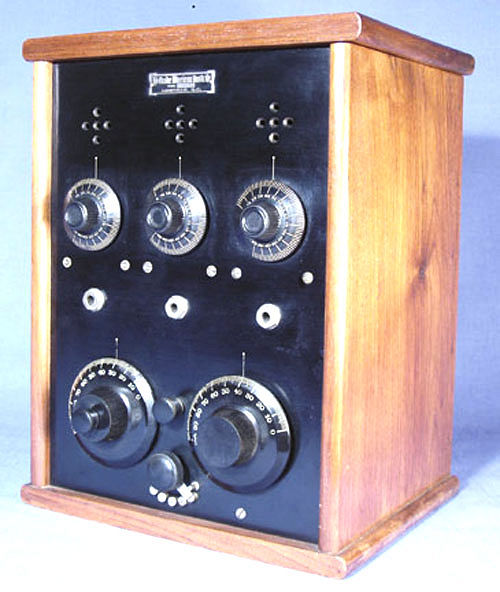 |
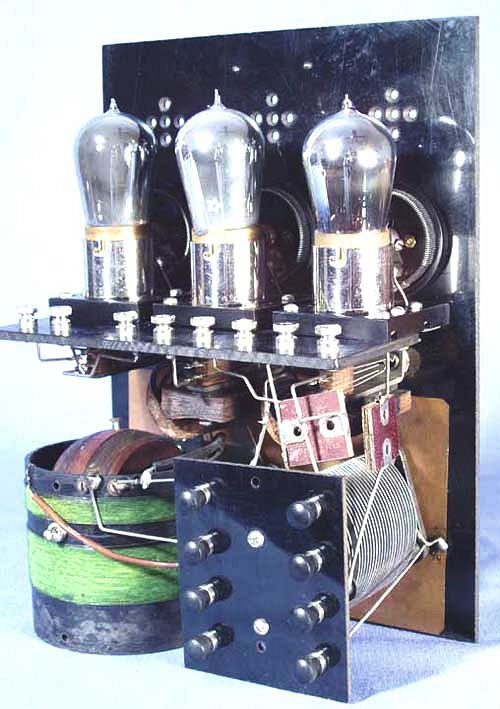 |
| This is a report by Robert Lozier on his trip to Ashville NC to research Hi-Grade Wireless. As someone said, time is something that keeps everything from happening all at once. And so it is that my intention to research the Hi-Grade Instrument Co. of Asheville, NC took about 30 years to get going. I first learned of Hi-Grade sometime around 1974 when I visited the late Wayne Nelson - W4AA for the first time at Concord, NC. He owned a Hi-Grade Model HS-2 three tube receiver and showed me a little 3" x 5" note card containing all the info he had on the set.... Basically the clues were only the names of two men, John Rombau (owner of WFAJ license) and Dolph Blankenship (a woodwork shop owner that made the cabinets), plus the mention of a radio station call of WFAJ. The dates mentioned were 1923 and 1924. Much later, Merrill Bancroft noted that the McGraw-Hill RADIO TRADE DIRECTORY of 1924 listed the company..... OK, not much to go on.... About two weeks ago I received in the mail a certificate for a free night at any Red Roof Inn and I realized that I still have over 50 hours of "comp time" built up from having worked out of state like a DOG during July and August. Things just clicked, I thought it was finally the right time to send a few e-mails and make a few calls to see if any microfilm records existed for Asheville newspapers for the period 1921 - '25. Good news came from the Pack Memorial Library in downtown Asheville... They have almost complete runs of the Asheville Citizen and Asheville Times of that period. I showed up at the 10AM opening time on October 1st. and headed straight for the Reference Desk. I prefaced my remarks to the woman on duty by showing her large color pictures of the HS-2 that is now in my collection along with my meager information on the set. She said that she was not aware of anyone ever making inquiries about such a company in Asheville. She asked if the library could have copies of the photos for their North Carolina Collection and of course I was delighted at the interest and turned them over. The library already has what appears to be a few hundred bound books of Xerox copies of microfilm clippings on various subjects and did indeed have a radio and TV section. However it starts with the founding of WWNC in 1927.... There was only a brief mention of experimental broadcasts over the last five years. I decided to copy most of the pre WW-II info just in case there were some 'oldtimers' mentioned that might possibly have links to the earlier days... After completing that task I was ready to go to the microfilm. The reference librarian asked me where I wanted to start and warned me that it would take about one hour to go through one month of papers on film. What to do??? A Web search revealed that the station call WFAJ was one of 378 issued before June 30, 1922. If Mr. Rombau had received a license, was he ready to go? I was not so sure that the Hi-Grade radio was 1922 vintage and maybe the latest technology was a little late to arrive in the western mountains of North Carolina. The librarian thought that the evening paper, The Asheville Citizen, might have been read by more of 'the working class'. So I was about to ask for the first roll of 1923 microfilm but at the very last moment thought that there might have been more advertising just before Christmas 1922. The librarian found a reel that went from 2 September to 30 November, 1922 and I thought that advertising might have 'cranked up' before the end of November so said that is where I would start. Eight days into my search; actually less than ten minutes of microfilm, Bingo!. The Sunday Citizen for Sept. 10th, 1922 has a Page 1 headline: "Citizen Opens Radio Broadcasting Station". This was a lively paper; national and international news, with headlines full of Harding administration scandals, coal mine & textile mill strikes and the continuing troubles of a Europe dealing with the aftermath of "The Great War"... If I had started with the 1923 reel, I would have missed all the info on WFAJ! Here is why..... The Asheville Citizen, like a good number of papers in the rest of the country, had a relatively brief fling with operating a 'radiophone' (broadcasting) station. It was located at the Citizen Building at 16 Haywood Street, Asheville which was torn down sometime in the late 1930's to make room for the F. W. Woolworth building which survives today as a art and decorating gallery. There were rooms leased to various businesses.... In Room 25 was the Citizen Radio Shop and Hi-Grade Wireless Instrument Co. is given as being at "Room 24 Citizen Building" (Asheville Citizen - 19 Oct. 1922, Pg. 9) along with the slogan "Built here to hear". A 29 October 1922 ad states "Radiophone Station WFAJ Is operated by the Hi-Grade Wireless Instrument Company of Asheville, who manufacture the famous "Hi-Grade" Radiophone Receiver" Also an article says: "Mr. (G. I.) Stevens, the radio construction and operating engineer of the station." (Asheville Citizen - 13 Sept 1922 - Pg.11) During three weeks of testing before the official announcement reception reports were received from Flat Rock, Waynesville, Hendersonville and Kennelworth hospital and Oteen sanitarium where radios were already installed in several wards for World War veterans. During that time the announcements for radiophone concerts go away and I see ads for Goode's Drug Store (Radio Department), Piedmont Electric Co. (Radio Department), Brown Hardware & Asheville Battery Co. showing cuts from Magnavox and Westinghouse RC & Senior. It could be that the market faded quickly for the Hi-Grade tube set when put up against the RC. Maybe they did not turn out as many sets as I might have thought. Some time later (1923/24) the Asheville Battery Company obtained a radio license to operate WABC from a 8 x 12 foot room in the back of the company building at 19 Haywood Street. The 20 Watt broadcasting unit was operated by G. O. Shepherd "and his gang". (One other account says "10 Watter") When the Chamber of Commerce decided to get behind the formation of WWNC in 1926, the Asheville Battery Co. through its owner (?) a Mr. Jackson gave up its license. The call went to the Atlantic Broadcasting Company and subsequently was taken over as the key station call letters of the Columbia Broadcasting System in New York City. WCNC went on the air in February 1927 with a transmitter purchased from WSM in Nashville, TN. Names I found to research are:
After about 5 1/2 hours of scanning microfilm my eyeballs were fried.... I think the next step is to see if the Old Bumcombe County Genealogical Society can run down some of the names I found.... Maybe this time less than 30 years will elapse before more details come out. PS: Found an interesting article from 1937 titled "Asheville Man was first to 'Talk Around the World' - radiotelephony (not code) circa 1907/08! It is a valid claim... I'm sure I can transcribe the article for publication. |
Sumter Radio |
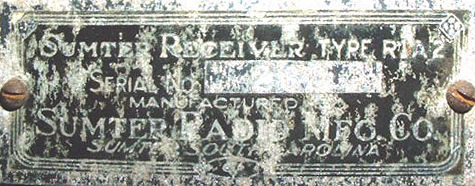 |
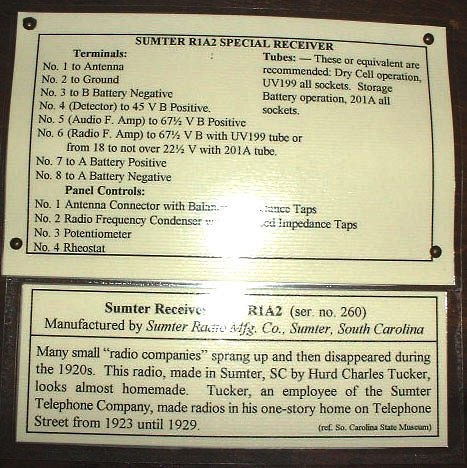 |
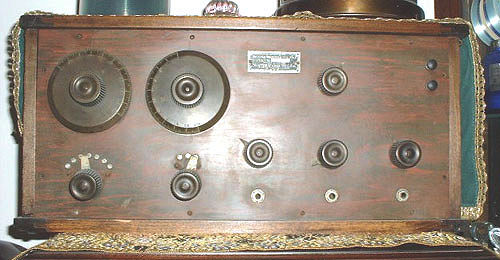 |
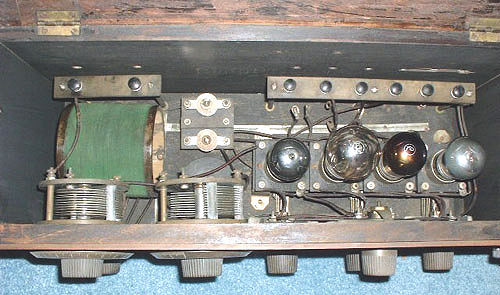 |
Iveyline |
| In the mid 1920's Southern Toy Company of Hickory, North Carolina manufactured cabinets intended to be used by home builders of radios. Below you will see a scan of a Southern Toy Company ad that was in the December 1924 issue of Radio News magazine. There are also photos of a 3 tube battery set built in a Iveyline cabinet made by Southern Toy Co. |
 |
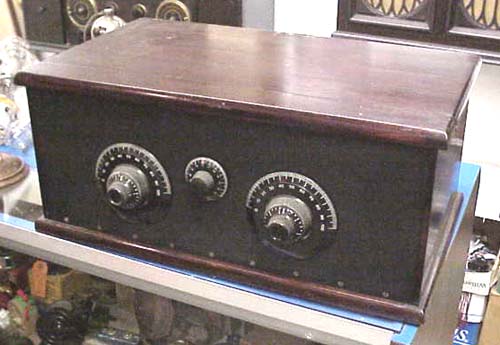 |
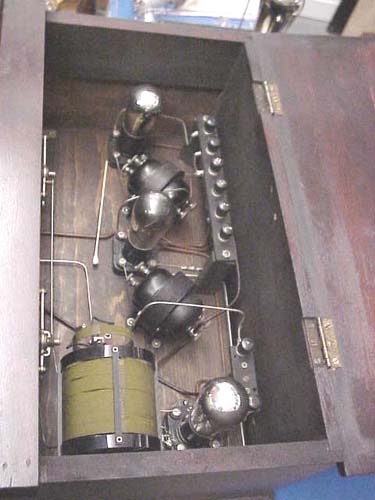 |
Etheredge |
 |
Etheredge radios were made in Spartanburg, S.C. They started in 1925 and closed in 1926. Their shop was on main street under the Aug W. Smith Company. These photos were provided by Michael Brian. |
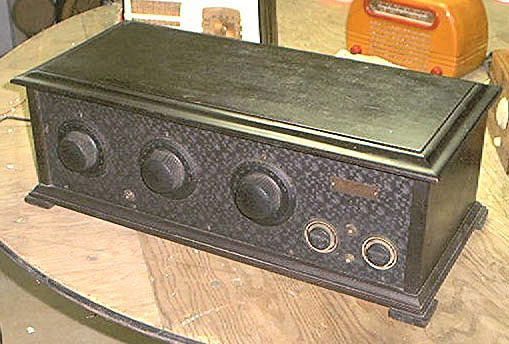 |
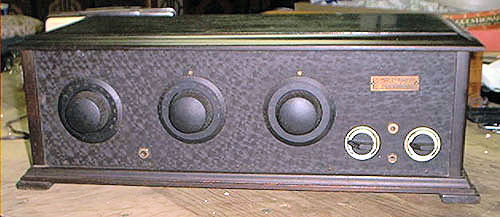 |
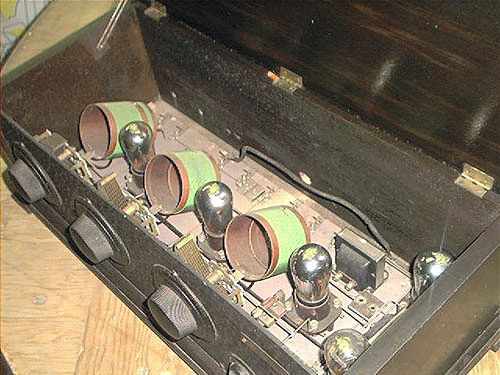 |
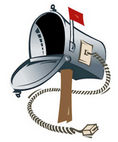 |
Mailboxes:Club E-Mail Box & Facebook Address https://www.facebook.com/groups/2313906588756167/?ref=share
|
|
| Web Editor: Barker Edwards | ||



